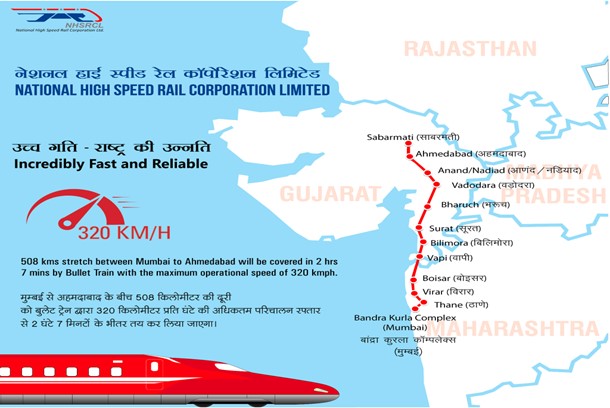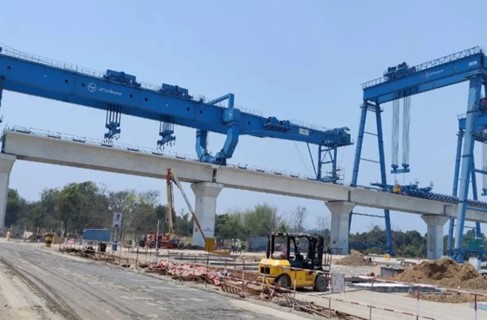As India enters the “Amritkaal”, much debate has been sought after its infrastructural development.
Today, Modi’s India is marked by a zeal for infrastructure and connectivity.
One of the essential pillars of this “New India” is the development of bullet trains. Bullet trains will act as an added benefit for a country where the rail network is an inherited boon from the colonial rule. It was in the year 2017 that prime minister Narendra Modi, and Japan’s Prime Minister Shinzo Abe, laid the foundation for the development of the Mumbai Ahmedabad High-Speed Rail (MAHSR) Project which is India’s first high-speed rail project.
The project will cover a stretch of 508.17 km, and the estimated cost is around Rs 1.08 trillion. The bullet train will have an average speed of 300 kilometers per hour (kmph) while its design speed will be 320 kilometers per hour.
However, even after six years, the promise of the NDA government to fulfill the goal of India’s first bullet train remains unfulfilled, as the project has continuously been missing its deadlines.Initially, it was to be commissioned by December 2023. However, this deadline has been extended with the first phase to be completed by 2026.

What has caused this delay?
The pandemic-infused lockdown, and the possibility of a global recession in recent times, have contributed to this delay. Interestingly, this is not it!
The clouds of controversy surrounding this project is yet another factor that has pushed its deadline. The controversy/problem of “land acquisition” is one of the major hurdles which has cost a delay in the project. Land acquisition, for example in parts of the Dharavi slum in Mumbai is even posing hurdles to the development of the metro in India’s financial capital.
So where does the problem lie?
Supreme court data reflects that nearly two third of all land acquisition disputes are primarily because of inadequate/unjustified compensation values or insufficient rehabilitation measures.
So why is that land acquisition proving to be so difficult?
A major problem arises due to the fact that the project will be passing through some of the most fertile agricultural fields. The impact of the projects is much more than a mere land acquisition problem.
In addition to land, 3892 structures and 37 Common Property Resources (CPRs) are expected to be taken down. The environmental impact includes the cutting down of more than 37000 trees.
The sociological impact is particularly, related to the land acquisition of the vulnerable sections like the Scheduled Caste, Scheduled Tribes, and Economically Weaker Sections, as well as people above 65 years with no immediate family members to support.
Apart from the controversies related to the development of the project, the political sphere also has a role to play. The Maharashtra government which steeped into debt during the pandemic is yet, to clear the allocation of Rs 5000 crores for the MAHSR project.

Despite these controversies, there has been some development, the report for which was released by the Ministry of Railways in December 2022.
More than 98% of the land acquisition has been completed in the states of Maharashtra and Gujarat, while 100% has been completed in Dadra and Nagar Haveli. However, the ground reality is that only 24% of the physical progress has taken place which is shocking, considering the fact that the project was to be completed by 2023.
Taking into account these controversies, and the minor development which has taken place, it’s natural to question whether India even needs a bullet train or not! After all, it will be an exclusive luxury in a country, where the general population who travels in the Gareeb Rath trains of the Indian railways will not be able to afford it.
Based on this, it is often argued that India should focus more on strengthening the existing railway networks, rather than spending huge amounts on the development of bullet trains which will be beyond the affordability of the majority of the population.
The defenders; however, argue that this comparison is odious. The investment in bullet trains cannot be compared with investment in the renovation of the existing rail network. The answer can be subjective.
Both the dimensions are important, in fact, India can take lessons from China which has developed a network of 22,000 km in the last 15 years. Nonetheless, adopting the capitalist framework- it can be said that bullet trains may or may not be available for all sections of society, but it will surely strengthen India’s production, resource utilization capacity and efficiency while also furthering its international stature, by making it a part of the club of nations having a high-speed rail network.
Written by Jyoti Harsh
Edited by Kushi Mayur
